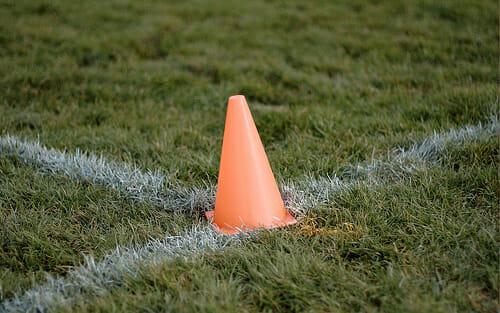September 21, 2012 by Wes Cronk in Opinion with 2 comments
 Yes, we’re talking about practice. One thing every even semi-serious ultimate team has in common is that they practice. But there are countless different philosophies on what a practice is meant to accomplish. Some clubs focus on conditioning, some on disc skills, some on fundamentals; the purpose and execution of practice varies greatly from team to team.
Yes, we’re talking about practice. One thing every even semi-serious ultimate team has in common is that they practice. But there are countless different philosophies on what a practice is meant to accomplish. Some clubs focus on conditioning, some on disc skills, some on fundamentals; the purpose and execution of practice varies greatly from team to team.
We want to begin looking at the different ways teams prepare in our new recurring series, How We Practice. Each article in the series will explore some aspect of a typical ultimate practice with the intention of opening up a larger discussion on the topic at hand. Our first installment will take a look at the ways practices are split between scrimmages and drills.
Ultimate practices are generally divided into three distinct segments: warm ups, drills, and scrimmages. Every team I’ve ever played for followed this same basic routine — excluding the more casual ones that skipped straight to the fun part — but the intended benefits of each portion are rarely discussed. Assuming that warming up is something we all accept as a necessary aspect of practice, what factors should be considered when determining how the rest of a practice is used?
Warm ups are most commonly followed by drills. Sometimes the two are even integrated into a single segment, where the drills are gradually increased in intensity as the players begin to loosen up. The purpose of nearly every drill is to ingrain some fundamental aspect of ultimate in the participants. The complexity of skills being acquired varies greatly.
A simple ‘marking drill‘ helps developing players establish basic components of their game while something like a ‘continuation drill‘ isolates an important scenario and helps build comfort with it through repetition. Drills can be very valuable when it comes to developing specific facets of one’s ultimate game but they are often limited by their narrow focus.
Most drills simulate specific aspects of a game but not the transition between them. They are great for teaching fundamentals but can limit a player’s ability to develop a feel for the flow of the game. It can be particularly difficult for rookies — even though they arguably benefit most from drills — to understand how a drill applies to in-game situations. Personally, I recall it taking me weeks to figure out how a dump drill with a continuation swing applied to games because I simply hadn’t seen that situation arise enough times at full speed to know what we were trying to simulate. What’s more, drills are often lined up for in a way that only vaguely looks like an on-field scenario — a very specific one at that — making it difficult to integrate what is being taught into a player’s skill set.
Does this justify spending more time scrimmaging? Not really. Scrimmages are often less beneficial to the developing players who need to learn the most. Simply put, players with strong disc skills tend to get more touches in games, limiting the chance for newer players to get reps that they would be forced to take in drills. Focusing on scrimmaging too much can stunt the progress of a young ultimate player.
There is also the issue of limited competition. Particularly for college teams, where depth is usually a major issue, teams are regularly forced to decide between splitting up their top lines and having them play intact against their weaker teammates. Most teams put their best players on offense (that’s not universally true but is a prevalent strategy) meaning that the choice is between developing cohesion as a unit and practicing against defenders that aren’t as strong as the ones they will see at tournaments.
This is by no means a comprehensive analysis of how practice time is divided and it is not meant to be. That’s why we want to pose this question to the community at large: how does your team practice? Leave us comments on how do you decide what time is devoted to drilling or scrimmaging. We are interested to see how philosophies, styles and approaches differ from team to team and hope that by starting a discussion, we can learn from each other in order to start practicing for effectively and efficiently.
Photo courtesy of Flickr user nzbuu.